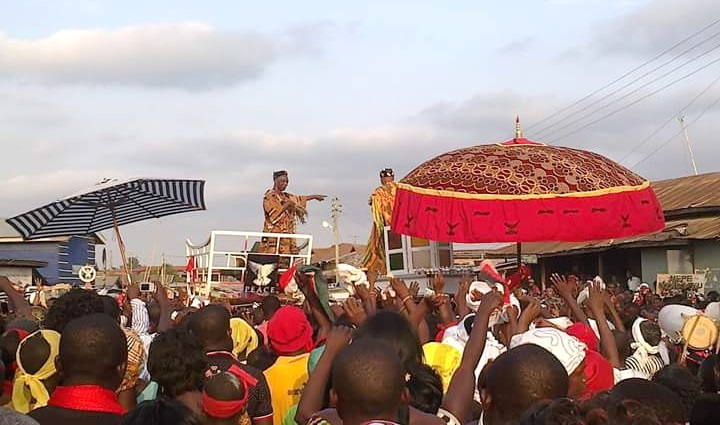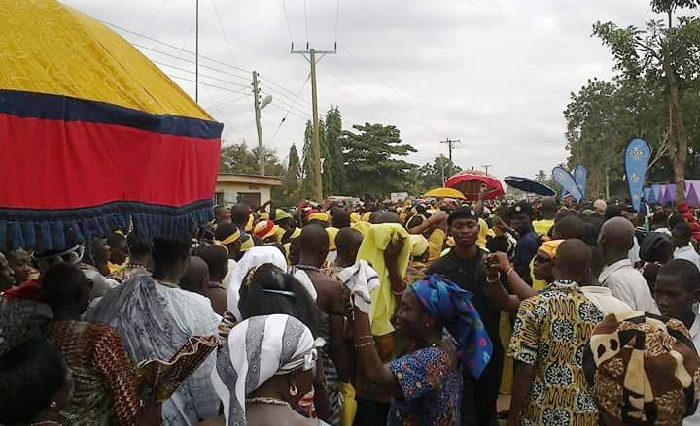
Sagrenti War, Afenorto and Mepe - a cultural dynamism towards development
In 1874, General Sir Garnet Wolseley moved against the armies of the ambitious Ashanti Kingdom who were attacking the coastal tribes of the Gold Coast: the “Sagrenti War” (ie.Sir Garnet War) as it came to be known.
Advertisement
The Anlos chose to align with the Ashantis. But the soldiers of Mepe, on the other hand, fought alongside the British colonial army for the freedom of the people of the coastline, an alliance that won most of the battles.
By this exceptional valour, the people of Mepe gained the accolade “Mepe kukuruku tsagblatsa, nekotsoe be yewoe bi dzo wu xe”, to wit, “kernel shells’’(i.e Mepe) had proven that they could produce superior quality fire to that of the baphia nitidia (the all local coalition). Baphia nitidia is a prickly tough wood well known for its burning prowess.
The origin of Afenorto
Mepe celebrated its battle victories by dancing to tunes of “Agbekor” war drums. This became an established tradition, with our forefathers setting a day aside (at the end of July) for the annual commemorations of what came to be known as” Agbekortu”.
Since the period coincides with the recurrent floods caused by the yearly overspill of the Volta River between the late 1960s and early 1970s, all citizens returned home (to Mepe) on a forced occupational holiday since the spills disturbed most economic activities (particularly, clam picking, fishing and farming) along the banks of the river.
However, there was a sudden turn of events in 1918 when the great influenza (kpata) swarmed the area with an unprecedented high morbidity rate which caused an abrupt interruption in the annual ritual for close to four decades.
A committee set up to work on reviving the festival recommended the fusion of the “Agbekortu” and “Time-out at Home” celebrations into the “Afenorto” Festival. Afenorto has undergone some transformations but has maintained virtually the same pattern since its outdooring in 1955.
Preparations underway
Currently, the chiefs and people of the Mepe Traditional Area are feverishly preparing for yet another round of Afenorto Festival, a “Period of Rest at Home” celebrated annually to renew the sense of oneness among the people.
It thus provides a unique opportunity for reunions, particularly bonding with the extended family and ancestors. The festival is interspersed with family and clan meetings (Apekpoe) convened to resolve differences, build bridges, and deliberate on issues of welfare, marriage and so on.
The undying characteristics of the Afenorto Festival include musketry and drumming (the talking drum); offering libation at “Vasime”, a location where twins were traditionally outdoored; a procession of chiefs and people of the traditional area to the durbar grounds, as well as a resplendent display of chieftaincy and customary regalia.

This is where the five proud clans of the Mepe people process in meticulous splendour. When the Dzagbaku division dressed in white takes the lead, the Adzigo clan in green will follow, with the Sevie in yellow; Gbanvie in red and the Akorvie dressed in assorted colours follow in successive order to the grand durbar held on the first Saturday of August.
Line up for 62nd edition
Organising committee Chairman, Mr Francis Nudevu; Vice Chairman, Mr Christian Atitsogbe and Public Relations Officer, Mr Shabanton Dutsrogbe, told the Daily Graphic that this year’s 62nd grand durbar would fall on August 6, 2016 for a festival that would officially commence on July 29, 2016.
They explained that the three-week long festival had been dotted with various activities such as clean-up exercises, sporting and cultural drumming competitions, as well as live bands, choral music and beach parties
This year’s festival has the theme: “Quality Education; Key to Socio economic Transformation of North Tongu”.
At the grand durbar, the chiefs and queen mothers will sit-in-state majestically with their maces – symbols of authority. Togbe Kwasi Nego VI, Manklalo of Mepe Traditional Area, will present an address to the guest of honour, usually a government official, who in turn gives a speech in apparent response to the paramount chief.
The grand durbar ends in the afternoon with the return of the chiefs in their palanquins to their respective palaces with pomp and pageantry.
The ensuing days are marked by special merrymaking activities, some of which are targeted at raising funds to support developmental projects in the area. State harvest, regatta, fun beach, and drumming and dancing are some of the activities.
After various rituals to cleanse the land and stools and final observance for the dead, the curtain is officially drawn on the festival.
This year, the climax is on August 15. Non-residents then return to their various places of residence to patiently await the occasion to come around the following year.



